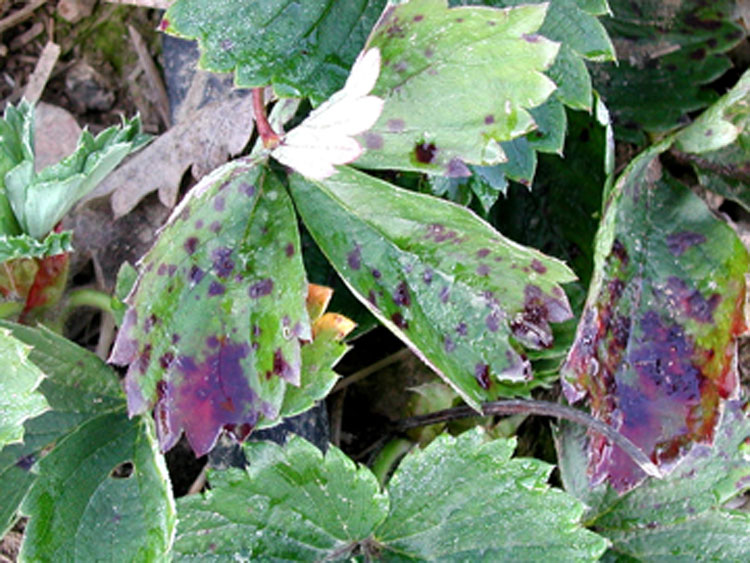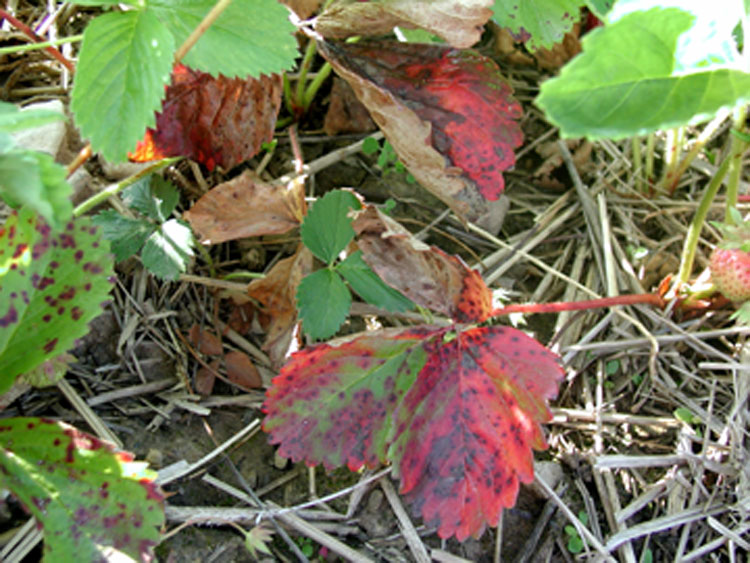Leaf spots are the common symptom for several strawberry diseases such as:
The fungus Mycosphaerella fragariae causes an infection which starts off as small purple spots on leaves. Later, spots have a narrow whitish to grayish margin. Sometimes lesions centers drop out, giving leaves a “shot-hole” appearance.


Fruit infections may also occur with this fungus. They are called “black seed” as the infections center around individual seeds (achenes).

Stem lesions may also be evident on leaf petioles and runners.

More information about leaf spot.
Leaf blight is caused by the fungus Phomopsis obscurans. Symptoms start off as small, brown spots surrounded by a wide purple halo.

Lesions forming from the leaf margin inward are often v-shaped in appearance.

More information about leaf blight.
The fungus (Diplocarpon earlianum) causes a disease which off as small purplish leaf spots.

Spots quickly fuse into large reddish purple patches on leaves, giving leaves a characteristic burned look.

More information about leaf scorch.
The bacterium Xanthomonas fragariae causes an infection that starts off as small, angular, dark green ,”water-soaked” spots on the undersides of leaves.


The angular spots between the veins are visible with top lighting …

…and back lighting.

Eventually these coalesce, and the leaf appears scorched.

Note: There are several methods to differentiate angular leaf spot from leaf scorch.
The presence of angular lesions between veins on the lower sides of leaves is indicative of angular leaf spot. These symptoms are not caused by leaf scorch.


Sometimes strawberries can be attacked simultaneously by leaf scorch fungus and angular leaf spot bacteria. It is hard to distinguish between scorch and angular leaf spot when viewing leaves from above. Holding leaves up to the light contrasts the “windowpane” effect of angular leaf spot to the dark spotting caused by scorch.


Sepals or “caps” may also be infected by angular leaf spot.

More information about angular leaf spot (scroll to the bottom of the page to view additional resources).
Use these resources if you need additional help with diagnosis and to find solutions to your problem.


